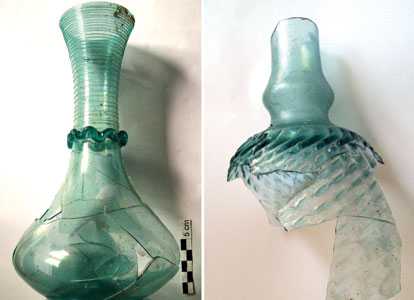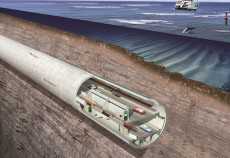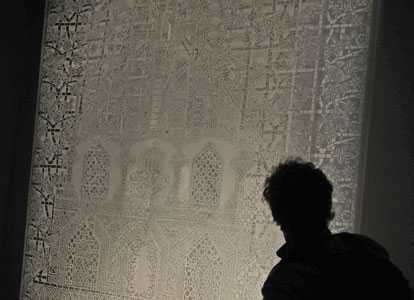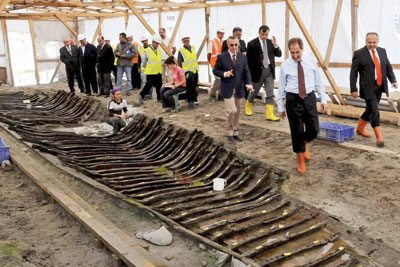ISTANBUL – Anatolia News Agency

Glasswork from the Roman, Byzantine and Ottoman empires has been discovered during the Marmaray excavations in
Istanbul. Experts previously believed Ottomans did not develop a unique glasswork style.
Various objects made from glass, bowls and plates used in daily life have been found during Marmaray excavations. AA photos
Various objects made from glass, bowls and plates used in daily life have been found during Marmaray excavations. AA photos
Archaeologists have discovered unique glasswork from the Ottoman Empire for the first time in the Marmaray excavations Istanbul’s Sirkeci neighborhood, as well as 2,000 year-old glasswork from the Romans and Byzantines.
Speaking to Anatolia news agency, Doğuş University Industrial Designs Department Chairman Üzlifat Özgümüş said the excavations, which have gone on since 2007, were the world’s largest and the most important excavations.
Since Istanbul was the capital of major empires throughout history, he said the city had artifacts from these periods. “These are findings from 2,000 years ago. We have found glass that has been produced from the latest period of the Greeks until the present day.”
The professor said the findings provided evidence contrary to prior beliefs, namely that Ottomans did not develop their own style of glasswork. “Many experts, especially Westerners, believed glasswork was not developed during the Ottoman Empire, but thanks to these findings, we have disproved this fact. We are shedding light on Ottoman glasswork for the first time … This excavation changed the history of glass.”
Roman Glasswork
Özgümüş said there were two kinds of glasswork from the Roman period, adding that high-quality glass was produced for high-class people and others were produced for daily use of public.
Glasswork from the Roman period, the professor said, were of higher quality than the ones of Byzantium, adding that the works of the Byzantines and the Romans were very different and that the Roman Empire produced the greatest products.
Various objects made from glass, bowls and plates used in daily life reflected forward-thinking, Özgümüş said. “The design of today’s glass and plates was found thousands of years ago – they date back to the third and fourth centuries. For the first time in Turkey, archaeologists have found silvered glass from the Roman period, also known as the Ennion glass – one of the most important findings from the first century. The glass master who created it is from Lebanon and his work has the weight of a well-known brand. The kind of glasswork we found is very limited in the world; it exists in a few special collections and museums.”
Özgümüş said brightly colored glass was rarely produced in ancient times. “Glass was light green, blue and brown because they could not refine glasses in that period.”
The professor said they also unearthed hundreds of grails that were the most important examples from the Byzantine period and almost the same as the ones used today.
Same art continued with similar colors
He said researchers also found a bottle from the 12th-century Byzantine period and pieces of a vase from the Ottoman period.
Özgümüş said the colors of the Byzantine and early Ottoman periods were the same.
“It is as if that the workmanship and style of glasswork continued without interruption. Ottoman masters and the Byzantine masters worked together. After the Byzantine period, the same art continued into the Ottoman Empire with the use of similar colors. Then colors brightened and we start to see the use of turquoise, for example – one of Ottomans’ most cherished colors. Bottles became larger and the art of glasswork developed a unique Ottoman identity throughout that period. This is what these excavations have found.”
via Marmaray dig reveals glasswork in Ottoman – Hurriyet Daily News.
 The 5.4km Avrasya Tuneli project will see a 5.4km-long tunnel built under the Bosporus Strait with a view to alleviating traffic on two existing bridges. It will be built at 25m below sea level and will entail the building of around 14.6km of roads in total, including toll plazas, an operations building and approach roads linking the European side of the city to an existing motorway network at Kadikoy on the Asian side.
The 5.4km Avrasya Tuneli project will see a 5.4km-long tunnel built under the Bosporus Strait with a view to alleviating traffic on two existing bridges. It will be built at 25m below sea level and will entail the building of around 14.6km of roads in total, including toll plazas, an operations building and approach roads linking the European side of the city to an existing motorway network at Kadikoy on the Asian side.



